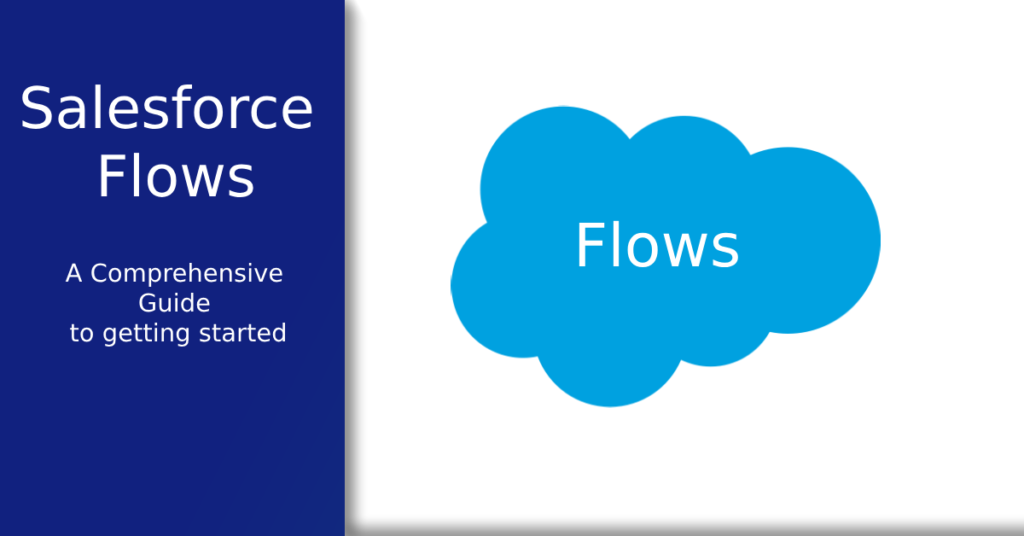
Getting Started with Salesforce Flows
Salesforce Flows allow for the visualization and automation of business processes, enhancing overall efficiency and efficacy in your daily operations. Explore this 2025 guide to deeply understand its building blocks, grant access, and leverage flow terminologies effectively. If you’re eager to dive deeper into the Salesforce universe, feel free to explore more about Salesforce on my site.
Building Blocks of Salesforce Flows
Embarking on the journey of getting started with Salesforce Flows, a clear comprehension of the foundational components is paramount. These user-friendly building blocks, crucial for molding advanced solutions, can be seamlessly assembled in a drag-and-drop manner via the Flow Builder, Salesforce’s intuitive interface designed meticulously for creating intricate flows.
Elements
Elements, which are the individual steps or actions within a flow, play an indispensable role in carving out the flow’s logic and sequence of actions. For a more nuanced understanding of creating records and executing other crucial actions, explore this insightful guide.
Connectors
Connectors serve as the linchpins that bind the elements in a flow, meticulously defining the sequence in which the elements are unfolded and executed. For a deeper insight into maneuvering between elements efficiently, refer to this comprehensive forum.
Variables and Resources
Variables ingeniously store and manipulate data within a flow, acting as placeholders for values, whereas resources are the reservoirs of reusable elements like Apex classes and custom Lightning components. To delve deeper into Salesforce resources and their myriad applications, explore this resourceful link.
Screens, Decision Elements, and Loops
Screens are the canvases that capture user input within a flow. Decision elements are the architects of branching logic, and loops are the engines that iterate over collections of data in a flow. To grasp how to strategically deploy these components in tailoring your business processes, consult this specialized guide.
Salesforce’s intuitive interface designed for creating intricate flows. Gaining proficiency in these building blocks is the first step towards leveraging Salesforce Flows to optimize business processes and enhance overall workflow efficiency.
Granting Access to Salesforce Flows
Properly assigning access to Salesforce flows is critical, ensuring that the designated users can create, modify, or execute flows without a hitch. Managing access meticulously is fundamental to maintaining organizational integrity and security, preventing unauthorized access and potential mishandling of sensitive processes. For a detailed, step-by-step tutorial on crafting a scheduled flow in Salesforce, check out this Salesforce Help Article.
Important Salesforce Flow Terminology
To harness the full potential of Salesforce Flows, mastering the core terminology is essential — not just for understanding how Flows function, but for building, troubleshooting, and optimizing them efficiently. Each term, from elements (like Assignments, Decisions, and Loops) to resources (such as variables, constants, and formulas), plays a critical role in how logic is executed and data is processed across your org.
Understanding these terms empowers Admins and Developers alike to build scalable, maintainable automations that align with business logic. Whether you’re constructing a simple Screen Flow or designing a complex, multi-object automation, knowing what each component does is the foundation of success.
If you’re just getting started or want to brush up, this beginner’s guide to Salesforce Flows is a great place to dive deeper. And for even more structured learning, Trailhead by Salesforce offers interactive modules that break down Flow terminology in an easy-to-digest format.
Salesforce Flows Conclusion
Understanding and leveraging Salesforce Flows are crucial in 2023 to optimize and automate business processes effectively. This guide provides a comprehensive overview, crucial terminologies, and steps to get started with Salesforce Flows, ensuring enhanced business efficiency. Implementing this powerful tool can significantly streamline workflows, reduce manual errors, and elevate the overall user experience. With the ongoing advancements in Salesforce, staying informed and adept at utilizing its features is paramount for sustaining competitive advantage in the business landscape.
For more tips and information on Salesforce Flows and other Salesforce topics, visit my Blog.
Salesforce Flows FAQs
The building blocks include Elements, Connectors, Variables, Resources, Screens, Decision Elements, and Loops.
Access is granted via the Salesforce Setup, where permissions can be set for different user profiles.
Yes, Salesforce Flows can automate a wide range of business processes, from simple tasks to complex workflows.
Yes, the Flow Builder offers a visual, user-friendly, drag-and-drop interface for creating flows.
